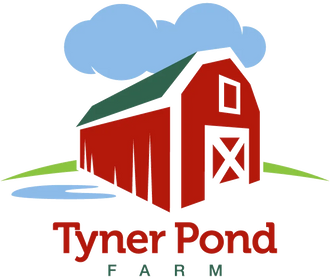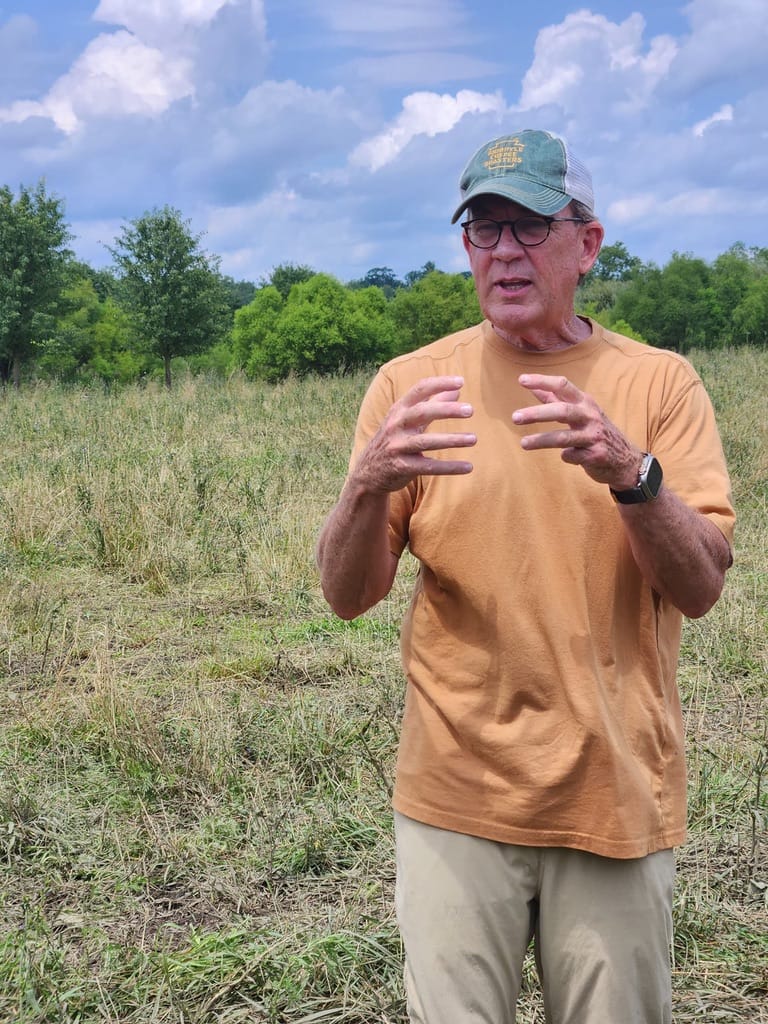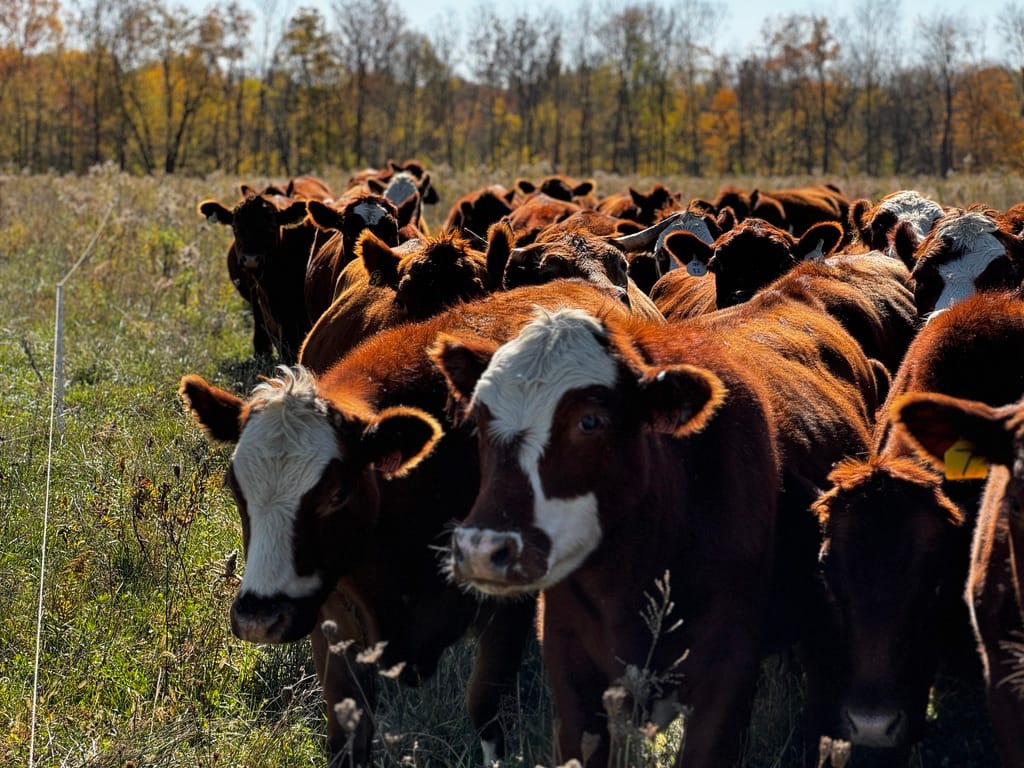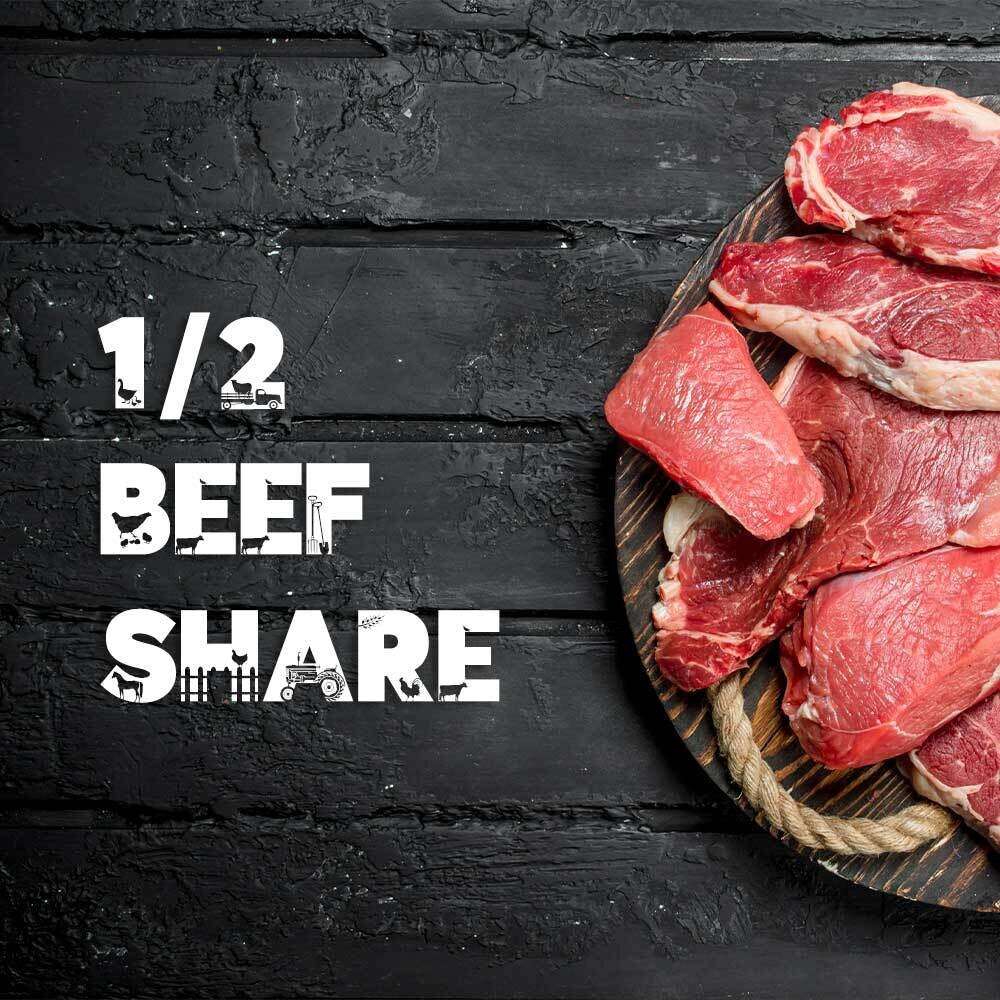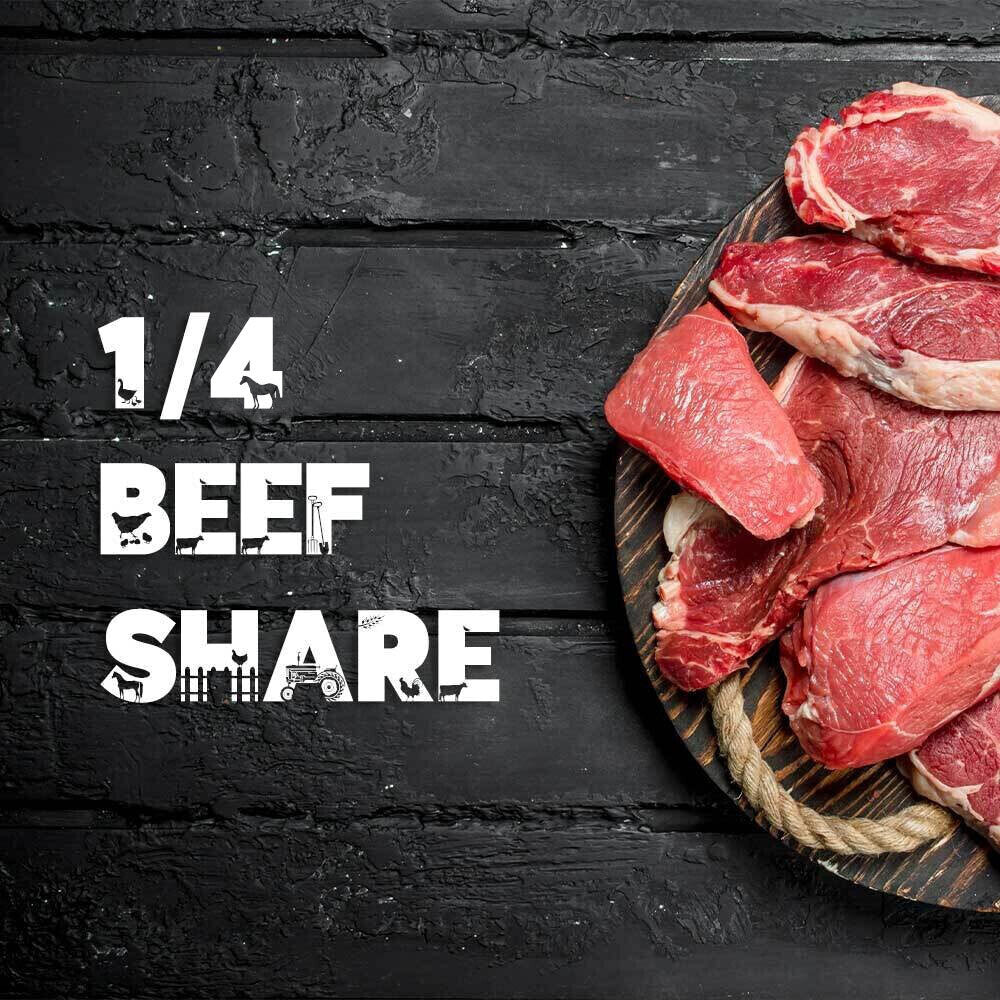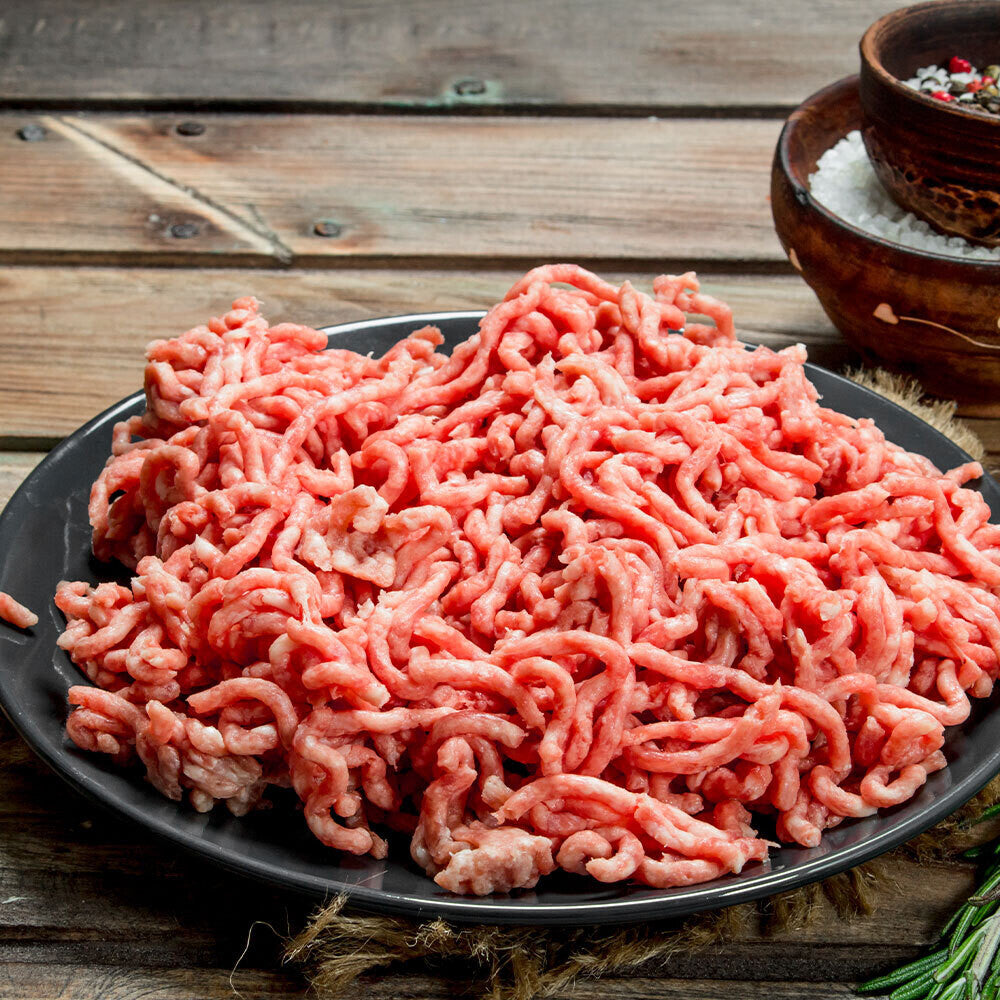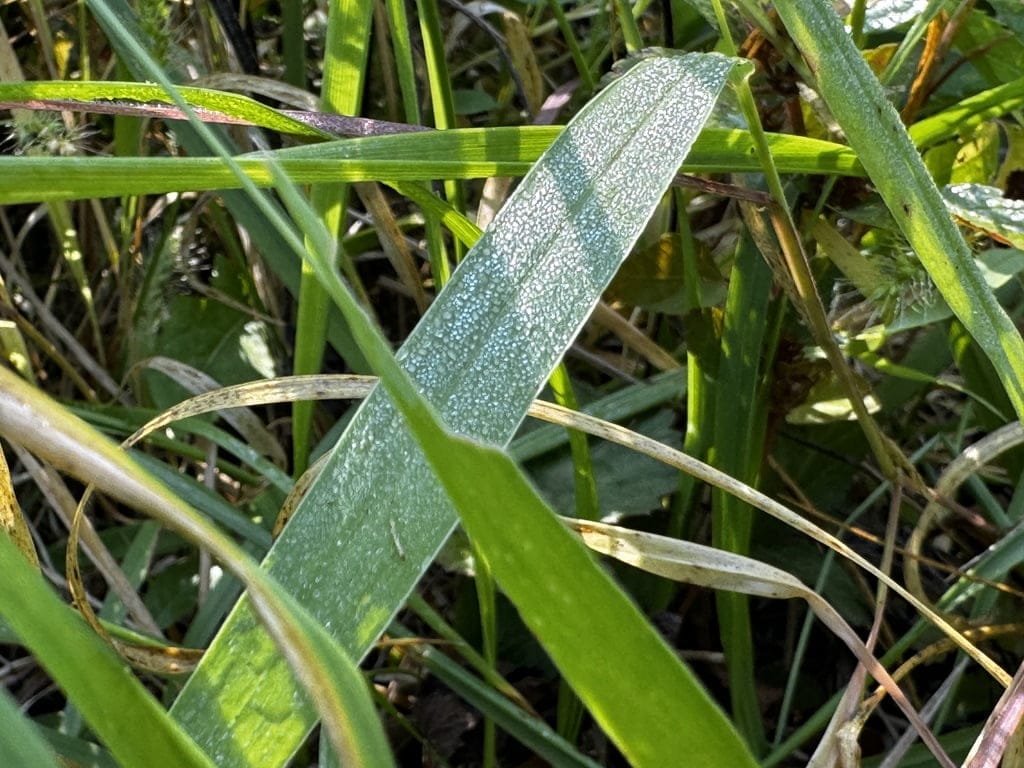
How Adaptive Grazing Keeps Our Pastures Resilient in Drought
As drought conditions grip much of Central Indiana, many farmers are watching their fields struggle under the relentless lack of rain. With no meaningful precipitation since July, it’s easy to assume that dry fields are inevitable.
Here at Tyner Pond Farm, we’ve seen a different reality unfold, and one image captures it perfectly—water droplets clinging to the blades of grass well into the morning.This isn’t a coincidence or a trick of nature. This dew, seen in the image above, is a clear, tactile sign that our adaptive grazing practices are working, even in the face of drought. The presence of these water droplets highlights the health and resilience of our pastures, offering evidence that our grazing system is doing what it was designed to do: retain moisture, encourage diverse root systems, and keep plants healthy even when the rain doesn’t fall.
Understanding the Power of Transpiration
What makes this image remarkable isn’t just the presence of water droplets—it’s when the photo was taken. At 10:30 in the morning, well into the heat of the day, these droplets remain. This is a sign of transpiration, the process where plants release water vapor from their leaves, which cools the plant and maintains a flow of moisture through the roots. In drought-stricken areas, many plants shut down this vital function early in the day, but our pastures are still actively transpiring. Transpiration isn’t just a biological process; it’s a sign of healthy, functioning ecosystems. The fact that our plants are still able to transpire even during drought shows that they have access to water deep within the soil. This is a direct result of the root systems we’ve cultivated through adaptive grazing.The Role of Adaptive Grazing in Resilience
At Tyner Pond Farm, we’ve built our entire grazing system around the idea of working with nature. Adaptive grazing, which involves rotating animals through pastures in a way that mimics natural herd movements, is the foundation of our land management. But it’s more than just moving animals—it’s about creating conditions where soil can regenerate, where plants can grow strong, and where water can be retained in the landscape. A key part of this system is the variety of plants we maintain in our pastures. Different species of grasses and forbs have different root structures, some of which dive deep into the soil while others spread wide at the surface. This variety allows our pastures to absorb and store water more effectively, creating a natural buffer against drought. The image of dew on the grass is a visible sign of that stored moisture being used by the plants, even when rain is scarce.Root Systems: Nature’s Water Storage
In conventional farming, fields often consist of monocultures or overgrazed pastures, where root systems are shallow and unable to store much water. Without deep roots to pull moisture from the soil, plants quickly dry out, and fields turn brown. But our adaptive grazing system encourages the development of deep and diverse root systems that can tap into soil moisture reserves long after the surface has dried out. This diversity is why, in the middle of a drought, our fields are still green, and plants are still producing dew like the water droplets in the image. Our pastures are healthy because they’re not reliant on a single species or a single root depth. They’re resilient, built to withstand not just drought but the inevitable fluctuations in weather that farming always brings.Why Dew Matters: It's Evidence of Success
The dew on our grasses isn’t just a sign of moisture—it’s proof that our pastures are thriving in ways that go beyond the visible surface. While other fields in the area may be showing signs of stress, our pastures are still functioning as a living, breathing ecosystem. The water droplets, seen up close on the leaves, are a tactile reminder that our regenerative practices are working. For us, it’s a sign that we’re on the right path. We’ve built a system that can hold up against drought because it’s designed to work in harmony with nature. The resilience of our pastures isn’t accidental; it’s the result of years of careful management and commitment to adaptive grazing. The drought we’re facing this year has been a challenge, but it has also been an opportunity to see firsthand how our grazing practices hold up in difficult conditions. The image of water droplets on the grass at Tyner Pond Farm tells a story of resilience, rooted in the diverse plants and deep root systems that make our pastures thrive. Even in the driest conditions, our system continues to function. Our plants are still transpiring, and our soils are still holding moisture. This is more than just luck—it’s the result of a deliberate, regenerative approach to farming that focuses on building healthy ecosystems from the ground up. At Tyner Pond Farm, we’re proud to say that even in drought, our pastures are thriving.
Tags:
Previous post
Celebrating Allan Savory: A Mentor and Inspiration for Tyner Pond Farm
Next post
